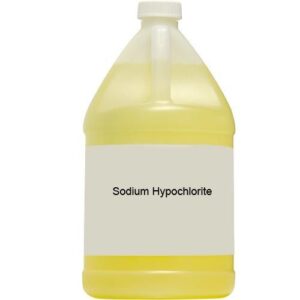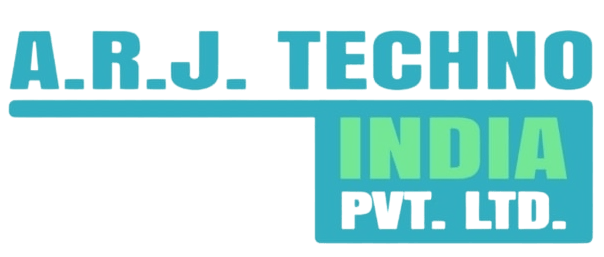 Sodium Hypochlorite is typically produced by the reaction of chlorine with a sodium hydroxide solution, and is commonly used as a household cleaner and disinfectant. In households, it is used for cleaning and whitening clothes, removing stains from surfaces, and as a general-purpose cleaner. In commercial settings, Sodium Hypochlorite is used in hospitals, food processing plants, and other facilities to sanitize and disinfect surfaces and equipment.
In water treatment, Sodium Hypochlorite is used to purify drinking water and wastewater. It is added to the water, where it reacts with organic matter, killing bacteria and other microorganisms, and leaving the water clean and safe to drink. Sodium Hypochlorite is also used in swimming pool and spa treatment, where it is used to maintain the water’s cleanliness and pH balance.
Sodium Hypochlorite is an effective bleach for textile and paper industries. It is used to remove color from natural fibers and to lighten or remove unwanted color from fabric. In the paper industry, Sodium Hypochlorite is used to bleach pulp, giving it a bright, white appearance.
Sodium Hypochlorite is also used in agriculture, where it is applied to crops as a disinfectant and fungicide. In agriculture, Sodium Hypochlorite is used to control diseases in crops and to protect the crops from fungal growth.
However, Sodium Hypochlorite is a hazardous chemical and should be handled with care. It is corrosive and can cause chemical burns if it comes into contact with skin or eyes. It is also reactive with certain materials and can cause fires if it comes into contact with organic matter. In addition, Sodium Hypochlorite can release toxic chlorine gas if it is mixed with certain chemicals. It is important to follow the manufacturer’s instructions and to handle Sodium Hypochlorite with care to minimize the risk of adverse effects.
In conclusion, Sodium Hypochlorite, also known as bleach, is a chemical compound with various applications such as cleaning, sanitizing, and water treatment. It is a strong oxidizing agent that is highly effective in killing bacteria, viruses, and other microorganisms, making it a valuable tool in public health and hygiene. However, Sodium Hypochlorite is a hazardous chemical and should be handled with care to minimize the risk of adverse effects.
Sodium Hypochlorite is typically produced by the reaction of chlorine with a sodium hydroxide solution, and is commonly used as a household cleaner and disinfectant. In households, it is used for cleaning and whitening clothes, removing stains from surfaces, and as a general-purpose cleaner. In commercial settings, Sodium Hypochlorite is used in hospitals, food processing plants, and other facilities to sanitize and disinfect surfaces and equipment.
In water treatment, Sodium Hypochlorite is used to purify drinking water and wastewater. It is added to the water, where it reacts with organic matter, killing bacteria and other microorganisms, and leaving the water clean and safe to drink. Sodium Hypochlorite is also used in swimming pool and spa treatment, where it is used to maintain the water’s cleanliness and pH balance.
Sodium Hypochlorite is an effective bleach for textile and paper industries. It is used to remove color from natural fibers and to lighten or remove unwanted color from fabric. In the paper industry, Sodium Hypochlorite is used to bleach pulp, giving it a bright, white appearance.
Sodium Hypochlorite is also used in agriculture, where it is applied to crops as a disinfectant and fungicide. In agriculture, Sodium Hypochlorite is used to control diseases in crops and to protect the crops from fungal growth.
However, Sodium Hypochlorite is a hazardous chemical and should be handled with care. It is corrosive and can cause chemical burns if it comes into contact with skin or eyes. It is also reactive with certain materials and can cause fires if it comes into contact with organic matter. In addition, Sodium Hypochlorite can release toxic chlorine gas if it is mixed with certain chemicals. It is important to follow the manufacturer’s instructions and to handle Sodium Hypochlorite with care to minimize the risk of adverse effects.
In conclusion, Sodium Hypochlorite, also known as bleach, is a chemical compound with various applications such as cleaning, sanitizing, and water treatment. It is a strong oxidizing agent that is highly effective in killing bacteria, viruses, and other microorganisms, making it a valuable tool in public health and hygiene. However, Sodium Hypochlorite is a hazardous chemical and should be handled with care to minimize the risk of adverse effects.Sodium Hypoclorite
Sodium Hypochlorite (NaClO) is a chemical compound commonly known as bleach. It is widely used for various applications such as cleaning, sanitizing, and water treatment. Sodium Hypochlorite is a strong oxidizing agent that is highly effective in killing bacteria, viruses, and other microorganisms, making it a valuable tool in public health and hygiene. Sodium Hypochlorite is typically produced by the reaction of chlorine with a sodium hydroxide solution, and is commonly used as a household cleaner and disinfectant. In households, it is used for cleaning and whitening clothes, removing stains from surfaces, and as a general-purpose cleaner. In commercial settings, Sodium Hypochlorite is used in hospitals, food processing plants, and other facilities to sanitize and disinfect surfaces and equipment.
In water treatment, Sodium Hypochlorite is used to purify drinking water and wastewater. It is added to the water, where it reacts with organic matter, killing bacteria and other microorganisms, and leaving the water clean and safe to drink. Sodium Hypochlorite is also used in swimming pool and spa treatment, where it is used to maintain the water’s cleanliness and pH balance.
Sodium Hypochlorite is an effective bleach for textile and paper industries. It is used to remove color from natural fibers and to lighten or remove unwanted color from fabric. In the paper industry, Sodium Hypochlorite is used to bleach pulp, giving it a bright, white appearance.
Sodium Hypochlorite is also used in agriculture, where it is applied to crops as a disinfectant and fungicide. In agriculture, Sodium Hypochlorite is used to control diseases in crops and to protect the crops from fungal growth.
However, Sodium Hypochlorite is a hazardous chemical and should be handled with care. It is corrosive and can cause chemical burns if it comes into contact with skin or eyes. It is also reactive with certain materials and can cause fires if it comes into contact with organic matter. In addition, Sodium Hypochlorite can release toxic chlorine gas if it is mixed with certain chemicals. It is important to follow the manufacturer’s instructions and to handle Sodium Hypochlorite with care to minimize the risk of adverse effects.
In conclusion, Sodium Hypochlorite, also known as bleach, is a chemical compound with various applications such as cleaning, sanitizing, and water treatment. It is a strong oxidizing agent that is highly effective in killing bacteria, viruses, and other microorganisms, making it a valuable tool in public health and hygiene. However, Sodium Hypochlorite is a hazardous chemical and should be handled with care to minimize the risk of adverse effects.
Sodium Hypochlorite is typically produced by the reaction of chlorine with a sodium hydroxide solution, and is commonly used as a household cleaner and disinfectant. In households, it is used for cleaning and whitening clothes, removing stains from surfaces, and as a general-purpose cleaner. In commercial settings, Sodium Hypochlorite is used in hospitals, food processing plants, and other facilities to sanitize and disinfect surfaces and equipment.
In water treatment, Sodium Hypochlorite is used to purify drinking water and wastewater. It is added to the water, where it reacts with organic matter, killing bacteria and other microorganisms, and leaving the water clean and safe to drink. Sodium Hypochlorite is also used in swimming pool and spa treatment, where it is used to maintain the water’s cleanliness and pH balance.
Sodium Hypochlorite is an effective bleach for textile and paper industries. It is used to remove color from natural fibers and to lighten or remove unwanted color from fabric. In the paper industry, Sodium Hypochlorite is used to bleach pulp, giving it a bright, white appearance.
Sodium Hypochlorite is also used in agriculture, where it is applied to crops as a disinfectant and fungicide. In agriculture, Sodium Hypochlorite is used to control diseases in crops and to protect the crops from fungal growth.
However, Sodium Hypochlorite is a hazardous chemical and should be handled with care. It is corrosive and can cause chemical burns if it comes into contact with skin or eyes. It is also reactive with certain materials and can cause fires if it comes into contact with organic matter. In addition, Sodium Hypochlorite can release toxic chlorine gas if it is mixed with certain chemicals. It is important to follow the manufacturer’s instructions and to handle Sodium Hypochlorite with care to minimize the risk of adverse effects.
In conclusion, Sodium Hypochlorite, also known as bleach, is a chemical compound with various applications such as cleaning, sanitizing, and water treatment. It is a strong oxidizing agent that is highly effective in killing bacteria, viruses, and other microorganisms, making it a valuable tool in public health and hygiene. However, Sodium Hypochlorite is a hazardous chemical and should be handled with care to minimize the risk of adverse effects.
 Sodium Hypochlorite is typically produced by the reaction of chlorine with a sodium hydroxide solution, and is commonly used as a household cleaner and disinfectant. In households, it is used for cleaning and whitening clothes, removing stains from surfaces, and as a general-purpose cleaner. In commercial settings, Sodium Hypochlorite is used in hospitals, food processing plants, and other facilities to sanitize and disinfect surfaces and equipment.
In water treatment, Sodium Hypochlorite is used to purify drinking water and wastewater. It is added to the water, where it reacts with organic matter, killing bacteria and other microorganisms, and leaving the water clean and safe to drink. Sodium Hypochlorite is also used in swimming pool and spa treatment, where it is used to maintain the water’s cleanliness and pH balance.
Sodium Hypochlorite is an effective bleach for textile and paper industries. It is used to remove color from natural fibers and to lighten or remove unwanted color from fabric. In the paper industry, Sodium Hypochlorite is used to bleach pulp, giving it a bright, white appearance.
Sodium Hypochlorite is also used in agriculture, where it is applied to crops as a disinfectant and fungicide. In agriculture, Sodium Hypochlorite is used to control diseases in crops and to protect the crops from fungal growth.
However, Sodium Hypochlorite is a hazardous chemical and should be handled with care. It is corrosive and can cause chemical burns if it comes into contact with skin or eyes. It is also reactive with certain materials and can cause fires if it comes into contact with organic matter. In addition, Sodium Hypochlorite can release toxic chlorine gas if it is mixed with certain chemicals. It is important to follow the manufacturer’s instructions and to handle Sodium Hypochlorite with care to minimize the risk of adverse effects.
In conclusion, Sodium Hypochlorite, also known as bleach, is a chemical compound with various applications such as cleaning, sanitizing, and water treatment. It is a strong oxidizing agent that is highly effective in killing bacteria, viruses, and other microorganisms, making it a valuable tool in public health and hygiene. However, Sodium Hypochlorite is a hazardous chemical and should be handled with care to minimize the risk of adverse effects.
Sodium Hypochlorite is typically produced by the reaction of chlorine with a sodium hydroxide solution, and is commonly used as a household cleaner and disinfectant. In households, it is used for cleaning and whitening clothes, removing stains from surfaces, and as a general-purpose cleaner. In commercial settings, Sodium Hypochlorite is used in hospitals, food processing plants, and other facilities to sanitize and disinfect surfaces and equipment.
In water treatment, Sodium Hypochlorite is used to purify drinking water and wastewater. It is added to the water, where it reacts with organic matter, killing bacteria and other microorganisms, and leaving the water clean and safe to drink. Sodium Hypochlorite is also used in swimming pool and spa treatment, where it is used to maintain the water’s cleanliness and pH balance.
Sodium Hypochlorite is an effective bleach for textile and paper industries. It is used to remove color from natural fibers and to lighten or remove unwanted color from fabric. In the paper industry, Sodium Hypochlorite is used to bleach pulp, giving it a bright, white appearance.
Sodium Hypochlorite is also used in agriculture, where it is applied to crops as a disinfectant and fungicide. In agriculture, Sodium Hypochlorite is used to control diseases in crops and to protect the crops from fungal growth.
However, Sodium Hypochlorite is a hazardous chemical and should be handled with care. It is corrosive and can cause chemical burns if it comes into contact with skin or eyes. It is also reactive with certain materials and can cause fires if it comes into contact with organic matter. In addition, Sodium Hypochlorite can release toxic chlorine gas if it is mixed with certain chemicals. It is important to follow the manufacturer’s instructions and to handle Sodium Hypochlorite with care to minimize the risk of adverse effects.
In conclusion, Sodium Hypochlorite, also known as bleach, is a chemical compound with various applications such as cleaning, sanitizing, and water treatment. It is a strong oxidizing agent that is highly effective in killing bacteria, viruses, and other microorganisms, making it a valuable tool in public health and hygiene. However, Sodium Hypochlorite is a hazardous chemical and should be handled with care to minimize the risk of adverse effects.
